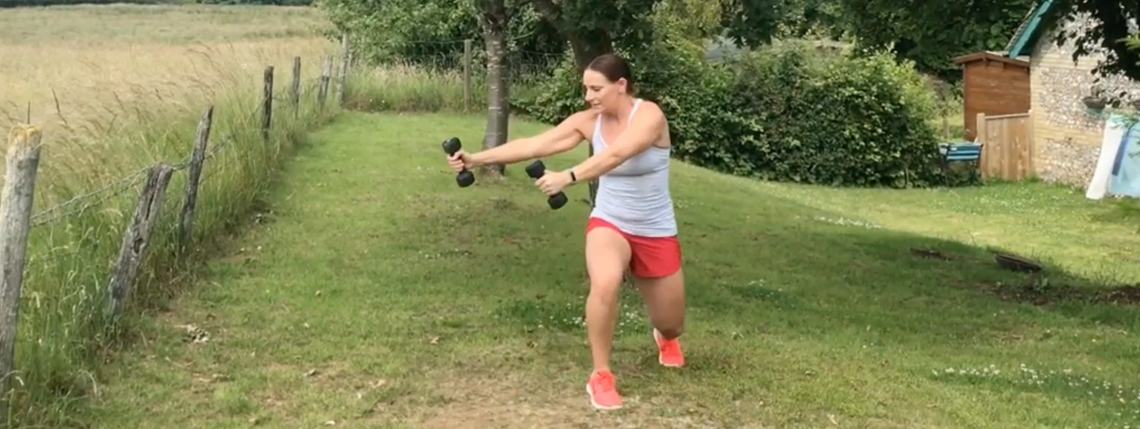We may be in lockdown but that doesn’t mean we should panic if our clients don’t have access to much equipment while we’re training them online or 1-2-1 in parks. In this blog, Ally Taylor shows us how the humble dumbbell, which can be found in most garages and lofts, can be used to work a range of muscle groups.
This article is taken from our September-October 2019 magazine. In this we exploring the idea of the minimalist personal trainer. We reached out to three leading PTs to tell us about a piece of kit they can’t live without and to show how this one piece of equipment can be utilised to work a range of muscle groups.
Why would you choose light weights as your preferred tool and what is the minimum selection you could live with?
Light weights are so versatile, with creativity and thinking beyond simple, single joint, sagittal plane exercises. They are great to add momentum to all types of propulsion moves, use as a weighted long lever to work the core, and add loads of movement multi-plane. I have 1.25kg, 2kg, 2.5kg and 5kg dumbbells in my arsenal and never run out of ways to use them effectively.
How do you make a workout effective using a lighter weight?
The key to using light weights is long levers and momentum. Unless someone has little strength, endlessly doing bicep curls or other simple, single joint, traditional exercises with a light weight will only improve the ability to do more of those things, which for most people is not why they train. To hypertrophy and improve strength and cardio fitness while using a light weight, you have to use it as an extension of your hand in a long lever – think momentum-based swings, reaches, punches, etc.
Being on the move, you are limited by how much equipment you can transport – so how do you increase intensity with a limited weight selection?
Rule the tool and understand your client’s biomechanics. I play with movement variables using multi-plane tweaks and skill development. I’ll pick the most important part of the sequence I have given to someone (goal and sport dependent), then give them three to 12 variations. Every joint except the spine has eight movement combinations available to it. Most people only train one or two of these, but if you hit all eight, you create sufficient overload for a plethora of goals, plus a higher level of tissue resilience and greater movement skill, so the body is more likely to cope when asked to find range or strength quickly.
How do you keep the workout engaging with limited tools?
I use story and deliberate emotional shifts to write my workouts, so no matter what the goal of the client, they go on a journey both physically and emotionally. It’s very easy to keep a workout engaging when the client is the hero of their own story. The actual exercises begin to matter less than the emotion you want the client to experience. There are hundreds of ways to load the glutes, but how I want my client to feel (happy, successful, angry, determined, etc.) will help me select what variation I am going to use, what intensity, and what tool.
Author bio
Ally Taylor is a personal trainer and group X instructor with a passion for movement. She believes people are resilient and capable of greatness. Give them your understanding – emotional, intellectual, social and physical, along with appropriate exercise prescription that appeals to and affects all those areas – and you can change lives! lovetomove.net







